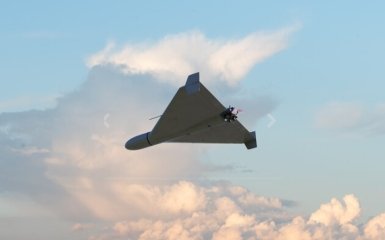Since July, at least 356 drones of various types have violated Belarusian airspace. Of these, 351 are Russian Shahed kamikaze drones used to attack Ukraine.
Points of attention
- Since July, more than 350 Russian "shaheeds" have flown into Belarus to attack Ukraine.
- Analysts recorded the shooting down and falling of kamikaze drones, as well as their courses towards the territory of Poland and Romania.
- There are several versions of the reasons for the Russian drones flying into Belarus, including navigation problems and the influence of electronic warfare.
- Dozens of crashed drones may remain on the territory of Belarus, which could have security implications.
- Information about Russian kamikaze drones has been added to the online map of military activity in Belarus for further analysis.
351 Russian "Shahed" have flown to Belarus since July
According to the monitoring project "Belarusian Gayun", over the past five months, analysts have recorded:
10 cases of shooting down or crashing of "Shaheeds" in Belarus and Latvia;
1 incident involving the destruction of a building due to a drone crash.
Dynamics of the increase in the number of drone flights:
July — 9 cases,
August — 12 cases,
September — 30 cases,
October — 49 cases,
November — 151 cases.
In the first two weeks of December, 105 Russian drones have already crossed Belarusian airspace.
Analysts report that during the observation period, 163 location-lost drones were recorded. This means that dozens of crashed UAVs may still be lying on the territory of Belarus.
All the information about Russian drones was put on the analysts' online map of military activity in Belarus.
Why do Russian "shaheeds" fly to other countries?
Every night, the Russians launch dozens of kamikaze drones over Ukraine, but they often stray from their intended course. Sometimes they fly into Poland or Romania, but more often end up in Belarus.
Several times, strange routes of the "shaheeds" were recorded: they circled over populated areas.
According to one version, the Russians are specifically sending drones to Belarus. In this way, they want to temporarily remove them from the range of Ukrainian electronic warfare and air defense.
The second version is related to drone navigation problems. They may be the result of anti-Russian sanctions.
The third version is related to the impact of electronic warfare on strike drones, which forces them to change course.




